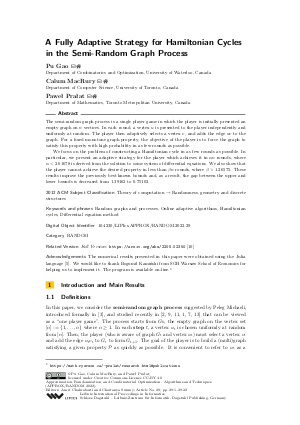LIPIcs.APPROX-RANDOM.2022.29.pdf
- Filesize: 0.82 MB
- 22 pages

 Creative Commons Attribution 4.0 International license
Creative Commons Attribution 4.0 International license









Feedback for Dagstuhl Publishing